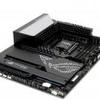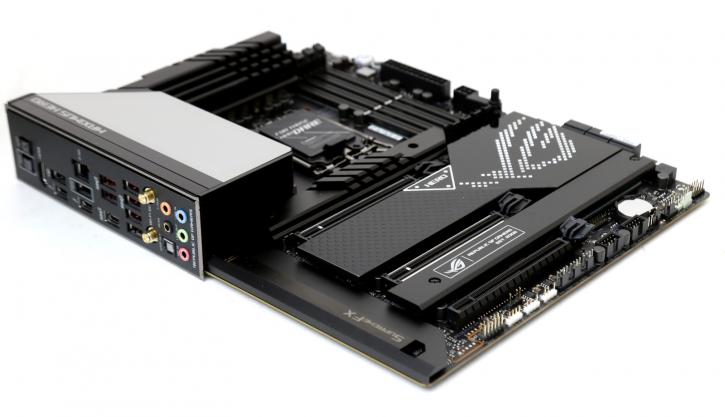Introduction
ASUS Maximus Z690 Hero review
To be precise, ASUS is back in the game, this time with another HERO, in the form of a Z690 motherboard. This Alder Lake motherboard is loaded with features and gadgets, and it's dressed to impress with its dark design. The Z690 motherboards from ASUS will be plentiful, with some of the models offering a choice between DDR5 and DDR4 memory configurations. It all starts with the flagship ASUS ROG Maximus Z690 Extreme motherboard, which is followed by the FORMULA, HERO, and APEX motherboards, all of which will include DDR5 memory and only DDR5 memory — and that's all there is to it. In total, there will be three ROG STRIX Z690 motherboards, one TUF GAMING Z690 motherboard, and a slew of PRIME Z690 motherboards, all of which will have differing degrees of technological sophistication, features, and sizes. ProART Z690-Creation 10G motherboard, which sounds like it'll be a "content creator" motherboard with 10GbE LAN connectivity and, I'm sure, a ton of I/O connectivity, will be sandwiched between the rest of the ASUS Z690 lineup. The ASUS Maximus Z690 Hero, as tested today, rocks a 20-phase power design with 90A PowerStages.
Alder Lake and Z690
DDR5 and PCIe Express 5.0 are among the first-ever for intel products. Z690 is the enthusiast chipset from Intel, and this motherboard is powered by it. It also marks the dawn of a new era, Alder lake processors are a completely new and faster architecture from Intel. We have written a lot about it, bus basically the new processors will have energy and performance cores to balance power consumption in idle and load conditions. next to that with the Alder lake platform new features are brought to the table.
BIG versus little
As an alternative to Intel's previous releases, which focused solely on single-core and gaming performance, Alder Lake puts the company fully back in the multi-core ring, led by its squad of sixteen-core goliaths built on Intel's transistor-dense 10-nanometer manufacturing process. But this time, Intel delivers its own interpretation of the term BIG.little. We'll talk a little more about it on the next pages.
ASUS Maximus Z690 Hero
Starting with the basics, the Maximus Z690 Hero is more than capable of handling the most powerful CPUs that Intel has to offer this generation, including the Core i7 and i9 processors. The new p- and e-core design places more demands on the operating system to delegate duties in a more dynamic manner, necessitating the development of a motherboard power supply circuit that can react quickly to changes in load. In order to achieve this requirement, the Hero is equipped with a battery of twenty 90A power stages, which are organized into ten paired phases, which ensures that transitions between efficiency and performance cores are handled as seamlessly as possible.
Adoption of PCIe 5.0 may take some time, DDR5 memory is however is here, and for the most majority of users, it will have a greater impact on their day-to-day computing speed. While the shift in memory architecture has presented issues, one of the most significant modifications from DDR4 to DDR5 has been the insertion of a PMIC, or power management integrated circuit, on the memory module itself. The PMIC introduces a voltage lock on some lower-end memory modules that are coming out this generation, limiting the amount of potential performance that can be extracted from the kits. Engineers of this mobo have discovered a means to unlock those PMICs, allowing extra power to be delivered to the DIMMs, allowing for faster frequency response and tighter timings. Even with kits that weren't built for overclocking, enthusiasts can locate options in the UEFI that allow them to manually alter the PMIC voltage and perform some basic overclocking. But let's startup the review.


